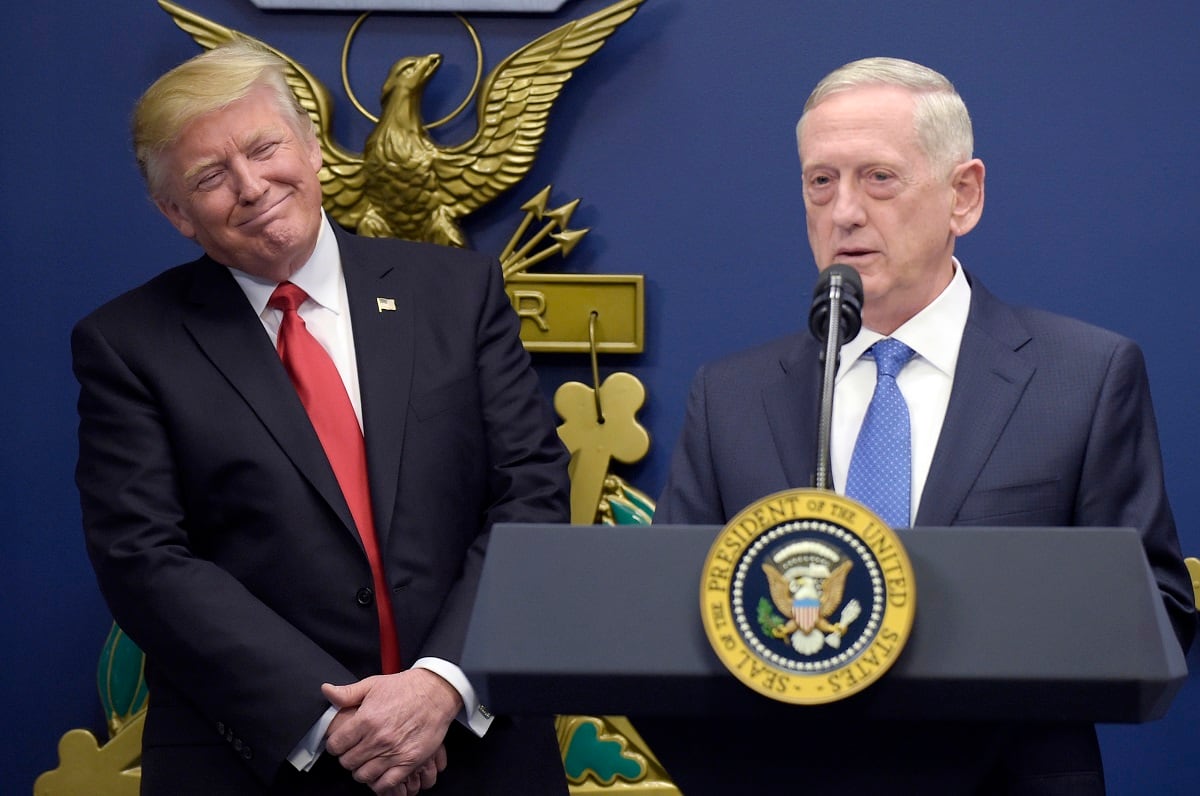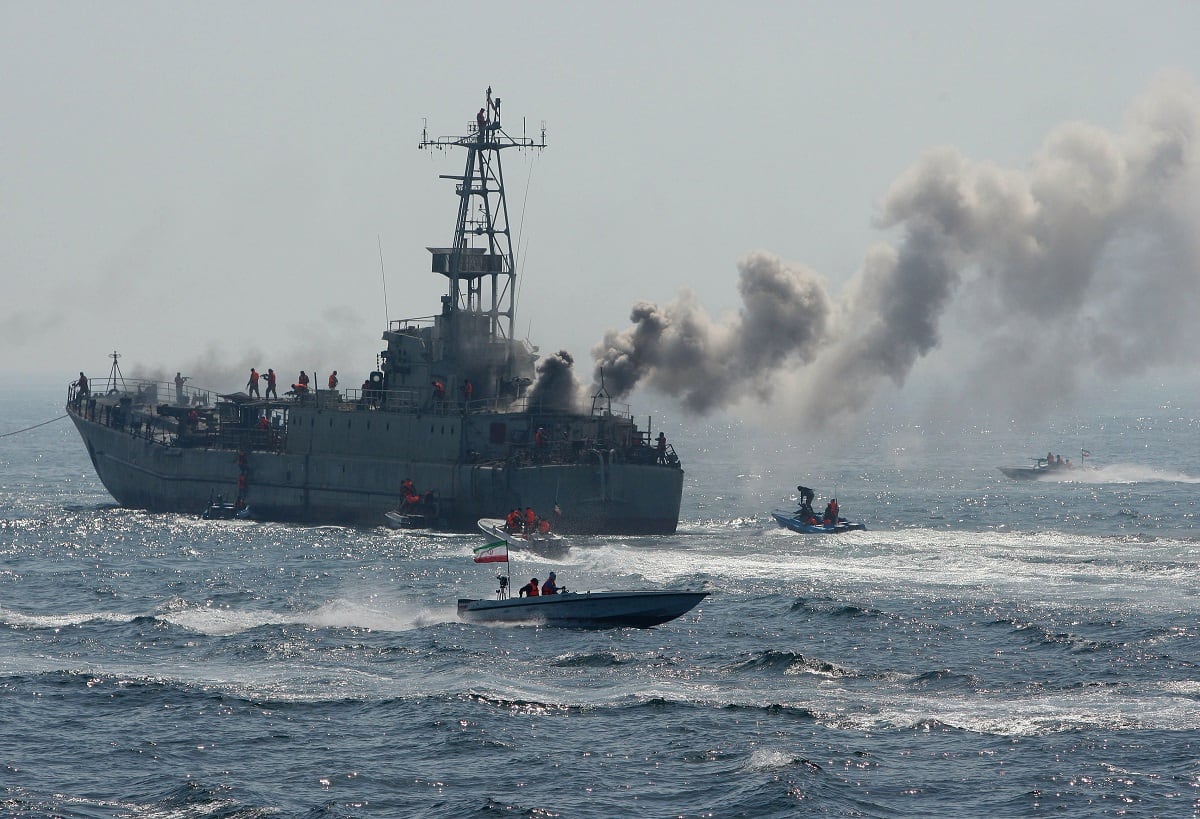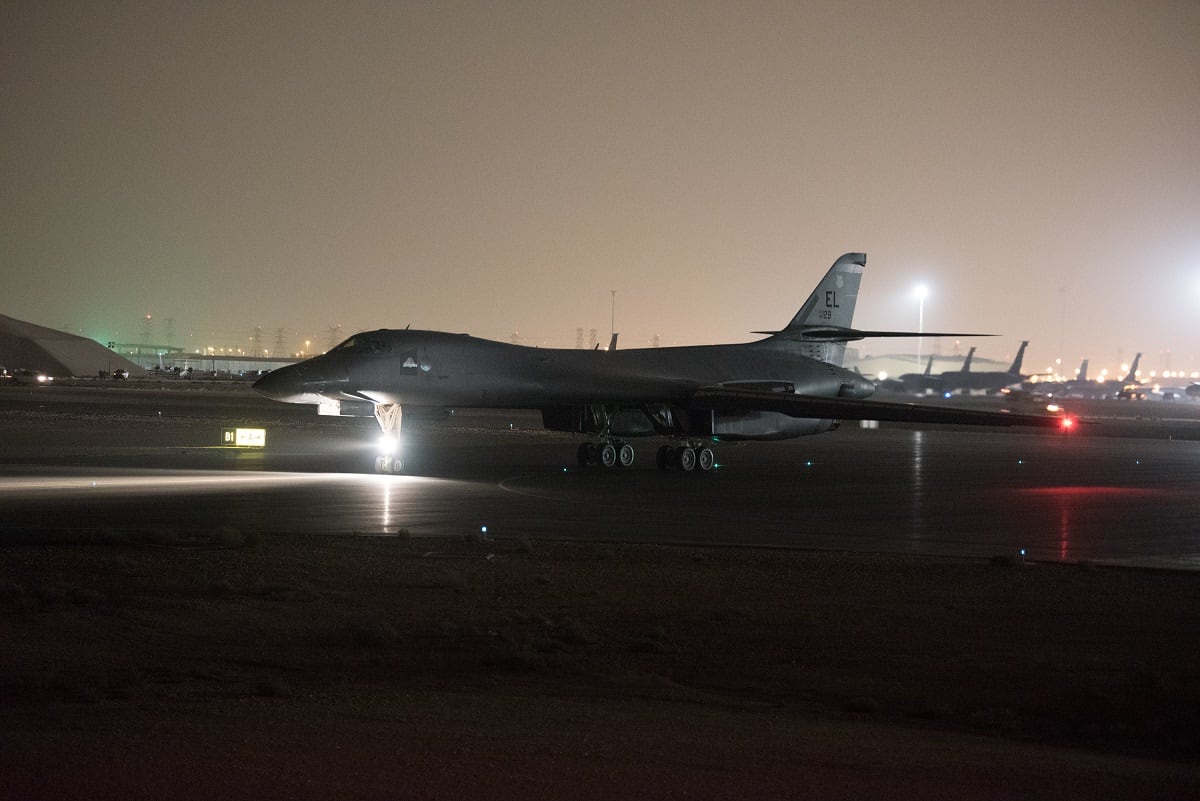Gaps in carrier presence have been increasingly frequent in recent years. Both 2015 and 2017 saw monthlong gaps in U.S. Navy carrier presence with little evidence of a major shift in power dynamics there. Indeed, the Navy is currently without an aircraft carrier in the Gulf, with the Theodore Roosevelt leaving the region in March without a replacement.
With a new National Defense Strategy from Defense Secretary Jim Mattis that deemphasizes the war on terrorism and places emphasis on competition with China and Russia, the U.S. is rethinking how it uses its most recognizable and fearsome force-projection instrument: the aircraft carrier.
The issue, of course, is oil and maintaining the free-flow tankers through the Strait of Hormuz, a crucial choke point that serves as a gateway to more than half the world’s known petroleum reserves.
Withholding carriers from the Arabian Gulf, also known as the Persian Gulf, upends nearly 30 years of Navy policy that created a standing requirement to have at least one carrier there, as well as a carrier in the western Pacific. That requirement dates back to 1990’s Operation Desert Shield that evolved into Operation Desert Storm in 1991, which saw five aircraft carriers deployed to the region.
Since then, various commitments have kept carriers in the region: Operation Northern Watch and Southern Watch, which created protected airspace over northern and southern Iraq; 1998’s bombing campaign against Iraq’s weapons of mass destruction facilities, Operation Desert Fox; 2003’s Iraq invasion and subsequent occupation; in 2011 when Iran threatened to close the Strait of Hormuz and then-U.S. Central Command head Gen. Jim Mattis ordered a standing two-carrier presence requirement in the Gulf; in 2014 when the Obama administration, in the middle of punishing budget cuts, ordered strikes on the Islamic State group in Iraq and then Syria after the public execution of journalist James Foley ― the high watermark for the militant organization that overran much of northeastern Syria and northwestern Iraq.
Now that the campaign against ISIS has rolled back the group’s presence to just another warring faction in Syria’s ongoing bloodbath of a civil war, leaving little for the Navy’s F/A-18s to strike, the military thinks the carriers might be more useful elsewhere. But what will happen to the balance of power if U.S. carrier patrols become the exception rather than the rule?
RELATED

Experts who spoke to Defense News say that even if the U.S. significantly reduces its aircraft carrier presence in the Gulf, it would have little overall impact to the strategic balance of power there. They also cast doubt on whether Iran would even want to attempt to shut down traffic through Hormuz, given the overwhelming international response that would be likely to come down on its head.
There are even indications that keeping a carrier in the Gulf might even play into Iran’s hands, said Bryan Clark, a retired submarine officer and former senior aide to then-Chief of Naval Operations Adm. Jonathan Greenert.
During his tenure with the former CNO, Clark, now an analyst with the Center for Strategic and Budgetary Assessments, said a study on the effectiveness of carrier presence in the region conducted by CNA with the Navy showed that Iran favored keeping U.S. carriers in the Gulf.
“The Iranians we had come talk to us, mostly defectors, all said, uniformly, that the Iranians consider the carriers in the Arabian Gulf a hostage that they can choose to attack at any point,” Clark said. “And they don’t even need to have any real success beyond that they can claim it in their media or show something hitting the carrier.”
For all its strategic importance, the Gulf is a relatively small body of water that never exceeds a width of 210 miles and drops to 35 miles across at the Strait of Hormuz. The Gulf is shallow, cramped and incredibly busy with commercial shipping, and overall just about the worst environment imaginable for picking a fight with an adversary more capable than a defanged Iraq.
On a clear day, a pilot taking off in a helicopter from the flight deck of a destroyer at any number of points in the Gulf can see shores on either side of the aircraft once airborne. Such a body could, in the event a regional war broke out, rapidly turn into a hellish shooting gallery with a large aircraft carrier being the prime target for Iranian shore batteries.

Counterintuitively, the patrol craft and mine countermeasure ships the Navy has deployed in Bahrain, home to the U.S. Navy’s 5th Fleet, serve as a better deterrent, Clark said, because those capabilities start to cast doubt on whether Iran could be successful in closing down the Strait of Hormuz with mines. And the other destabilizing activities that has angered successive U.S. administrations are not deterred at all by aircraft carriers.
“The carrier is mostly now about deterring Iranian efforts to close the Strait of Hormuz, it’s not going to stop Iran from sending Quds force to Syria or Iraq to interfere with our policy,” Clark said, referring to Iran’s Revolutionary Guard known for high-risk interventions designed to spread the country’s influence in the region.
Overall, less carrier presence in the Gulf does make strategic sense, Clark said.
“Going away from the 1.0 presence requirement in the Gulf is a useful way to free up carriers to do things that are more dynamic, to use the Pentagon’s word, and meet the challenges from Russia in the eastern Mediterranean or even in the north Atlantic.”
‘Wildly inflated fear’
Analysts also questioned whether there was a causal link between U.S. force posture in the Gulf and the free flow of oil through Hormuz.
John Glaser, director of foreign policy studies at the Cato Institute, agreed with Clark that keeping a carrier in the Gulf to protect the Strait of Hormuz from possible Iranian closure is strategically dubious. He went on to argue that Iran would be one of the hardest hit by a strait closure.
“First, this is just a wildly inflated fear,” Glaser said. “Beyond exaggerating Iran’s capabilities (it’s actually difficult to close the Strait), this scenario ignores Iran’s interests. After all, they export most of their oil through the strait, so they would be damaging their own economic interests by doing this.
“Moreover, any sustained attempt to close the strait would likely mobilize an overwhelming international military coalition against Iran, likely worse than the one that was generated in response to Iraq’s 1990 invasion of Kuwait, a prospect that would itself threaten the survival of the regime. It’s not a scenario Iran wants to invite upon itself.”
Furthermore, its unclear that U.S. Navy presence makes much of a difference in the oil trade, Glaser continued.
“If we pan out to a long timescale, it’s rather difficult to draw a causal link between oil supply stability and U.S. military presence,” he said. “For much of the 1970s, there was no external power occupying the region and protecting the free flow of oil, yet this was a time of considerable expansion of output.
“In the 1980s, the U.S. got more involved in the region but remained largely offshore. And since 1991, the U.S. has had a large presence in the region. So we have these three different eras with very different postures, but no identifiable difference in supply.”
Balance of power
Outside of questions of the military utility of keeping a carrier in the Gulf, regional experts also cast serious doubt on whether reducing carrier presence there would upset a delicate balance of power among U.S. Gulf region partners and an Iran constantly angling for influence there.
Launching airstrikes from carriers frees the U.S. from having to work around host nations’ political concerns about targets when those aircraft are land-based. But the fact remains that the U.S. has a deep presence in the region and has made increasing the capabilities of its Gulf partners a priority, said Nicholas Heras, a Middle East security programs expert at the Center for a New American Security.
“This move really is not a game-changer because the United States still has a strong forward-deployed presence at air bases in the Gulf such as Al Dhafra in the United Arab Emirates and Al Udeid in Qatar,” Heras said. “Those bases add a lot of muscle to the advanced weapons systems, particularly in warplanes and missile defense systems that Gulf Arab partners have purchased from the United States. Gulf Arab partner air forces train with American pilots, and are prepared to be the bulk of the force that would hit Iran in the event of a war.”

If the U.S. was to scale back its presence in the Gulf, it would be done in consultation with regional partners, Heras said.
Glaser also pointed to the air assets already in the region as a mitigating factor, asserting that if the U.S. still plans to send carriers to the Indian Ocean and Mediterranean Sea, “the impact of Mattis’ plan will be close to zero.”
Mattis, in testimony April 12 before the House Armed Services Committee, hinted that his department was looking to shake up how it employed its carrier strike groups.
“When we send them out, it may be for a shorter deployment. There will be three carriers in the South China Sea today, and then, two weeks from now, there’s only one there, and two of them are in the Indian Ocean,” Mattis said.
“They’ll be home at the end of a 90-day deployment. They will not have spent eight months at sea, and we are going to have a force more ready to surge and deal with the high-end warfare as a result, without breaking the families, the maintenance cycles ― we’ll actually enhance the training time.”
Experts who were skeptical of a move to reduce U.S. aircraft carrier presence in the Gulf even conceded that offsetting reduced presence with plus-ups there would likely assure allies of America’s commitment to the region.
“It’s possible that reducing carrier presence could reduce the perceived deterrent value of U.S. presence to Iran,” said Jim Phillips, senior research fellow for Middle Eastern affairs at the Heritage Foundation. “It could be offset by increased ground or air power to the region. It wouldn’t necessarily fatally undermine U.S. deterrence efforts.”
Still, Phillips argued, the Gulf states want the U.S. to stay engaged in the region, even with the rise of Russia and China posing a threat.
“There is no doubt that Russia and China pose greater military threats than Iran,” Phillips said. “But the Persian Gulf remains the storehouse for something like 55 percent of the world’s oil. It’s going to figure large into the U.S. strategic calculations well into the future.”
David B. Larter was the naval warfare reporter for Defense News.




